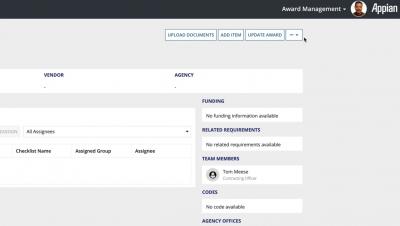Systems | Development | Analytics | API | Testing
Low Code
LinxTutorial: Control Flow
LinxTutorial: Expressions
Linx Tutorial: Types
Linx Tutorials: Services
Linx Tutorials: The Linx Server
The Changing Face of Automation, Part 2
It’s amazing how much we can get done by automating business processes. Whether it’s augmenting human labor, reducing risks, or making customers happy, when we do automation right, we can make big things happen in any organization. Perhaps this is why: In other words, falling behind the automation curve could be lethal. Coming out on top means automating as if the future of your business depended on it.
Why Appian?
We've Made Automation Even Faster!
If 2020 taught businesses anything, it’s that being able to turn on a dime and change everything about how you operate isn’t a “nice to have” – it’s a must. The demand for low-code technologies and automation was already climbing, but the COVID-19 pandemic accelerated the need to re-orchestrate broken processes and reduce manual tasks.
The Changing Face of Automation, Part 1
The mainstreaming of low-code development has changed the business automation landscape. And the blistering pace of this fast-moving trend—of combining and scaling artificial intelligence, and low-code—is at the heart of the hyperautomation movement. So says Neil Ward-Dutton in his chapter of the recently published HYPERAUTOMATION, a collection of expert essays on low-code development and the future of business automation.









